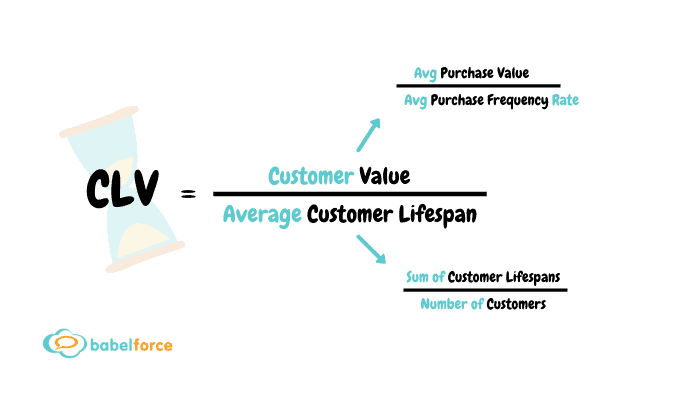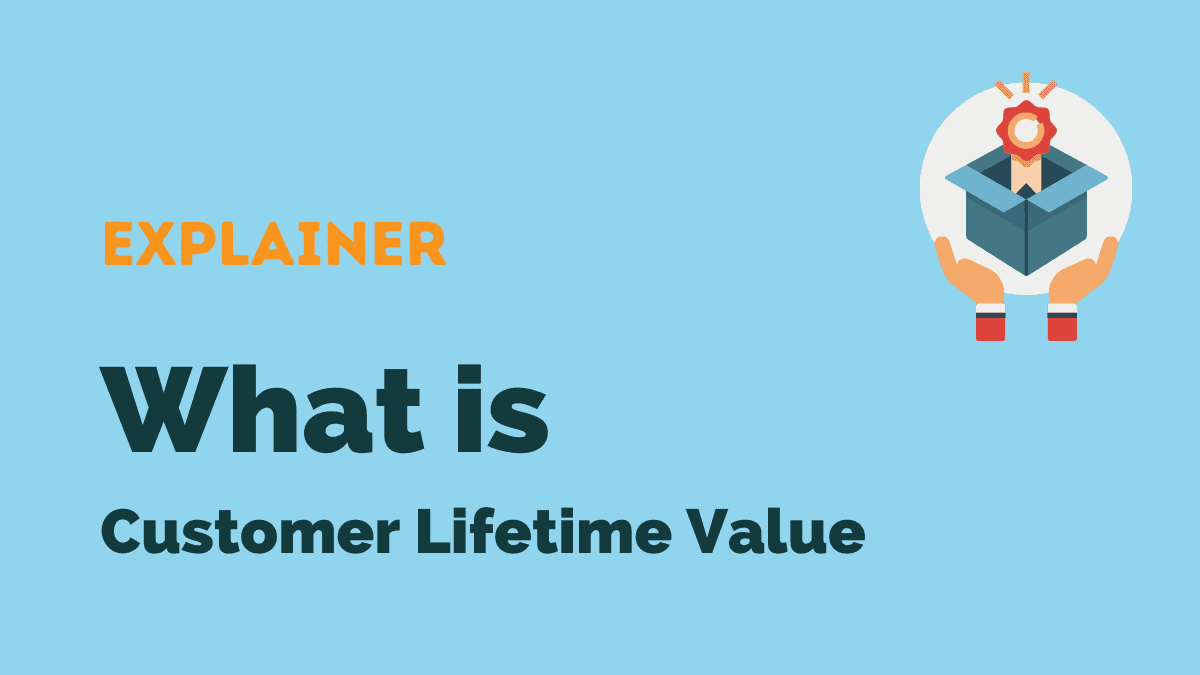The Customer Lifetime Value of a client is the amount of profit they generate for your businesses in their entire time as a client.
CLV combines information on acquisition costs, retention rates and customer spend. That’s crucial information for forward planning.
Unlike metrics like CSat or NPS, CLV relates directly to profitability (so it tends to be important to more people!)
How to calculate Customer Lifetime Value
Use the equation illustrated below to calculate your Customer Lifetime Value:

Why it matters to know your CLV
Top management often likes to know the profitability of a company in the future, but at a moment’s notice. The first metric that tells all is Customer Lifetime Value. New prices and changes in the market change both the amount the average customer spends and the mean duration of your relationship with them.
Since your business is in a constant state of flux, monitoring each of the variables we mentioned in the equation is key to maintaining a desirable Customer Lifetime Value..
How to increase your Customer Lifetime Value
Improving your CLV boils down to three goals: elongating Forging Long relationships with your customers (customer retention), maximizing the amount of money each customer spends, and limiting how much you spend maintaining the relationship.
You can achieve these by implementing several strategies.
1. Curb your spending with automated customer retention strategies
2. Prioritize upselling as part of your customer retention efforts
3. Reduce Customer Effort with good onboarding process
Curbing your spending with Automation
Reducing how much you spend on a customer increases your margins from the relationship. Areas to automate include customer support efforts, and actual service delivery. Strategies like SMS marketing make it easy to get new customers, all the while keeping those on board satisfied.
Upselling is a priority
It’s been proven that selling more products to your already trusting customers is better than getting new ones. Putting them first lowers customer acquisition expenses and further strengthens the bond you have with them.

Easy onboarding
Smooth onboarding procedures have a strong predictive power when it comes to customer loyalty. Such things as a dedicated team to introduce new customers to your services increases your net promoter score while lowering customer effort scores. Both of which result in lower customer churn rates and subsequent long customer lifetimes.
Are you getting the most from your relationships with customers? Why not start on the automation path and reap the rewards with this free ebook on automating customer service?




